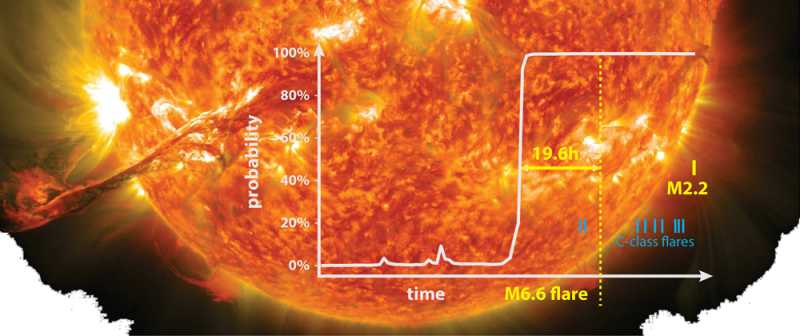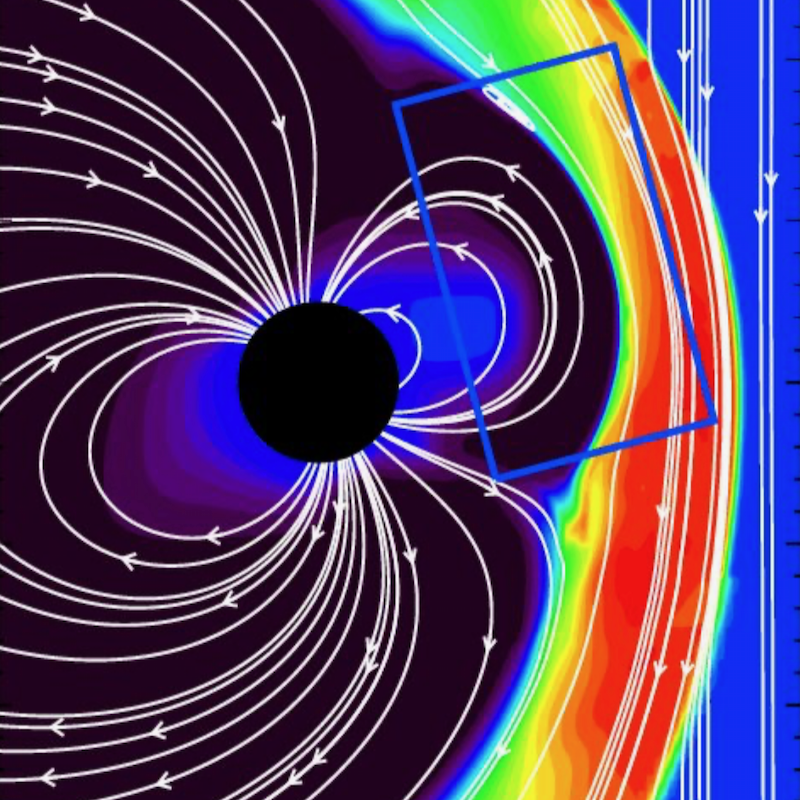
Predicting solar storms
Research scientist Gabor Toth at the University of Michigan wants to be able to predict large solar storms. He and his team want to use these predictions to protect Earth from a potentially disastrous space weather event. In a statement released August 11, 2021, he commented:
There are only two natural disasters that could impact the entire U.S. One is a pandemic. And the other is an extreme space weather event.
Extreme space weather could be a disaster, not only for those of us in the U.S., but for all of human society. Such an event would stem from a powerful storm on the sun. It wouldn’t harm us on Earth directly; our atmosphere protects our human bodies from such harm. But the upper layers of Earth’s atmosphere – and Earth’s magnetosphere – could be affected. A powerful solar flare has the potential to fry electronics and take down power grids around the globe. Fortunately, we haven’t had a truly major space weather event since 1859. Perhaps you’ve heard of what’s called the 1859 Carrington Event? It stemmed from a powerful solar storm that blasted Earth with solar plasma. It fried telegraph wires and produced such bright auroras around the world that birds took flight, thinking the aurora-light was daylight.
Modern technologies (like the telegraph) were sparse in 1859. But a solar storm today, of the same magnitude as the Carrington Event storm, would have far greater consequences. Our world is now jammed with technology. In a modern-day Carrington Event, electronics and power grids would be fried, global positioning systems would be disrupted, and astronauts and high-altitude air travelers would be hit by gusts of solar radiation. Toth said:
We have all these technological assets that are at risk. If an extreme event like the one in 1859 happened again, it would completely destroy the power grid and satellite and communications systems. The stakes are much higher.
That’s why Toth and his team want to find a way to have more advance warming that a large solar flare is about to happen. Current computer models provide only about 30 minutes of advanced warning of a large flare. Toth’s team wants to extend that lead time to up to three days.

‘Quantified uncertainties’
Toth and his team work within the Space Weather with Quantified Uncertainties program, funded by the National Science Foundation (NSF) and NASA. The program includes research teams from multiple disciplines who are trying to create better computer models for space weather prediction. As Vyacheslav Lukin of NSF said:
The need has been recognized for some time, and the portfolio of six projects, Gabor Toth’s among them, engages not only the leading university groups, but also NASA Centers, Department of Defense and Department of Energy National Laboratories, as well as the private sector.
Improving models for predicting solar storms
The National Oceanic and Atmospheric Administration (NOAA) currently issues a space weather forecast. That forecast is created via a model that Toth helped develop. NOAA began using an updated space weather prediction model – called Geospace Model Version 2.0 – earlier this year. And Toth and his team took part in that update, too. He commented:
We’re constantly improving our models. The main change in version 2 was the refinement of the numerical grid in the magnetosphere, several improvements in the algorithms, and a recalibration of the empirical parameters.

Geospace Model 2.0
The team’s Geospace Model focuses on the magnetic and plasma environment around Earth, its magnetohydrodynamics. These are the elements that play a key role in the space weather in Earth’s vicinity. The model predicts magnetic disturbances that would impact important systems on Earth, such as power grids. These predictions can allow advanced warning to power grid operators and others in similar positions to mitigate the problem.
To provide a lead time as long as that envisioned by Toth and his team – a three-day lead time – will require scientists to monitor what’s happening on the solar surface before ejections have even left the sun. Toth said:
We’re currently using data from a satellite measuring plasma parameters 1 million miles away from the Earth.
Scientists would like to take remote observations of the sun’s coronal mass ejections, which produce huge flare-like explosions of matter that are visible in X-rays and UV light. Toth explained:
That happens early on the sun. From that point, we can run a model and predict the arrival time and impact of magnetic events.
Faster algorithms for speedier forecasts
An important step for accomplishing all this will be for the scientists to create new and faster algorithms. Toth uses the Frontera supercomputer at the Texas Advanced Computing Center. The Frontera supercomputer is said to be the fastest academic system in the world.
One algorithmic improvement Toth and his team made was to combine the kinetic and fluid aspects of plasmas in one simulation model. This can increase space weather model speeds by 10 to 100 times. Toth explained:
People tried it before and failed. But we made it work. We go a million times faster than brute-force simulations by inventing smart approximations and algorithms.

Creating local space weather forecasts
Toth’s team has been able to run the full Geospace model faster than real time on a single graphical processing unit, which is what future supercomputers will rely on. To run their model at that speed on a traditional supercomputer would require at least 100 CPU cores. Toth said:
It took a whole year of code development to make this happen. The goal is to run an ensemble of simulations fast and efficiently to provide a probabilistic space weather forecast.
Probabilistic forecasting will help scientists localize predictions to small regions on Earth and answer specific questions. Toth explained:
Should we worry in Michigan or only in Canada? What is the maximum induced current particular transformers will experience? How long will generators need to be shut off? To do this accurately, you need a model you believe in. Whatever we predict, there’s always some uncertainty. We want to give predictions with precise probabilities, similar to terrestrial weather forecasts.
It will take thousands of simulations over the coming years to achieve these goals. But hopefully the future of precise solar weather prediction will arrive … before the next storm does.
Bottom line: To protect us from space weather, scientists are creating better computer models to quickly predict when and where a storm will hit Earth.
Source (2021): The Space Weather Modeling Framework Goes Open Access
Source (2012): Adaptive numerical algorithms in space weather modeling
Read more: How Likely Is Another Carrington Event?











